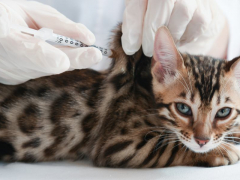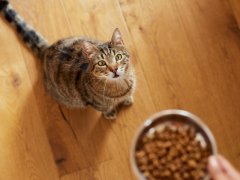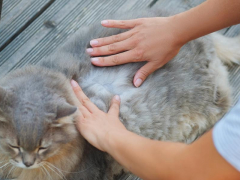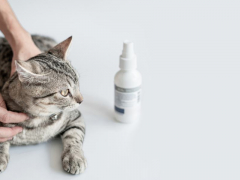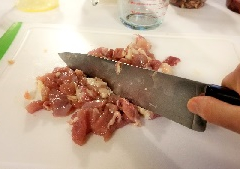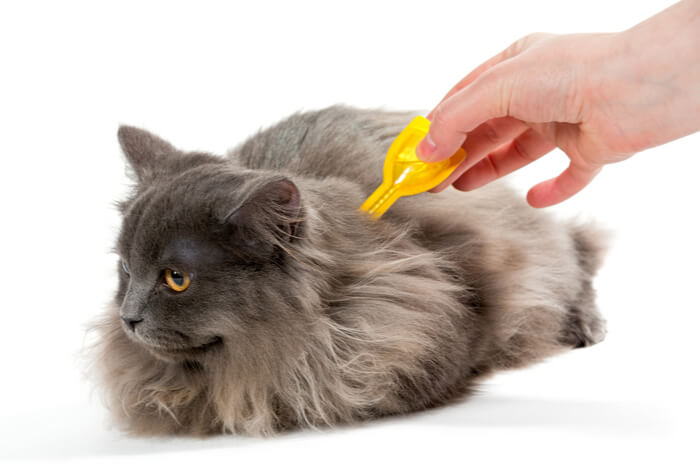
Revolution for cats is a brand of topical, “spot-on” flea, tick, intestinal parasite, and heartworm preventative containing the main ingredient selamectin. Currently, it is available as the two prescription products—Revolution for Cats and Revolution Plus for Cats.
Revolution for Cats Overview

Just want to learn about Revolution Plus? Click here to read our detailed guide.
In this article, you’ll learn about Revolution for cats, the ingredients both Revolution products contain, the types of pests they target, possible side effects to consider, and some frequently asked questions.
About Revolution for Cats

The main ingredient found in Revolution products is selamectin. Selamectin is a topical avermectin antiparasiticide. Selamectin works by enhancing release of a neurotransmitter called GABA. In certain parasitic worms like roundworms and in arthropods like fleas, GABA inhibits nerve conduction. By enhancing GABA release, selamectin essentially causes paralysis and death of the parasites it targets.
Revolution “spot-on” products are applied to the surface of a small target area or “spot” of the skin, usually in front of the shoulders at the back of the neck.
It is important to note that while these pesky pests are affected by Revolution by coming in contact with the skin and don’t have to actually bite a kitty to die, Revolution products for cats do not provide true repellency that would prevent fleas or ticks from coming in contact with a pet.
What Does Revolution Do for Cats?

View On Chewy
The original Revolution provides a spectrum of action against adult fleas and prevents flea eggs from hatching, targets the intestinal worms roundworms and hookworms, ear mites, and mosquito-borne heartworms. While selamectin has some action against the American dog tick, the original Revolution for cats is not indicated for treatment or prevention against ticks.
While not labeled for it, Revolution has also been successful in treating for the sarcoptic mange mite that causes scabies.
The newer Revolution Plus includes the addition of sarolaner, which is an isoxazoline class acaricide/insecticide that inhibits GABA, leading to neuromuscular overstimulation and death of the parasites it targets. The addition of sarolaner broadens Revolution Plus’ spectrum to include 3 ticks, the American dog tick, black-legged/deer tick, and the Gulf Coast tick.
According to the manufacturer, when newly applied, Revolution can start killing fleas within 12 hours with a majority killed within 24 hours. When already applied prior to flea exposure, Revolution can start killing fleas within 6 hours with a majority killed at 12 hours.
The manufacturer states that in lab studies, Revolution Plus started to kill the black-legged/deer tick within 24 hours.
Side Effects of Revolution for Cats
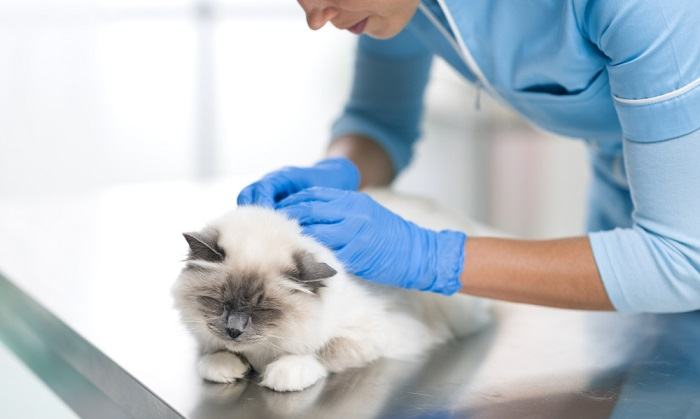
When used properly, side effects to Revolution products for cats are uncommon. Both Revolution and Revolution Plus are labeled for cats 8 weeks of age and older. Revolution Plus is also restricted to cats weighing at least 2.8lb. Topical products like Revolution should never be ingested.
In clinical trials for Revolution, about 1% of cats were found to have a temporary hair loss at the application site, according to the manufacturer. Other signs seen in less than 0.5% of cats included digestive upset, poor appetite, drooling, an abnormally increased breathing rate, and muscle tremors.
In Revolution Plus, a little less than 5% of cats showed signs of looking excessively tired, less than 4% showed signs of skin irritation, and about 3% showed signs of a decreased appetite. No hair loss was documented with Revolution Plus.
At least some of the digestive upset and signs of excessive drooling or salivation may have occurred secondary to kitties licking the product off of themselves after application. Products like Revolution are very bitter tasting, so if a kitty were to lick a recently applied product off either themselves or a housemate, the bitter taste alone can lead to excessive drooling, agitation, and sometimes even vomiting.
According to DVM360’s article “Toxicology Brief: The 10 most common toxicoses in cats” this effect is typically not a true toxicity, but a sometimes dramatic reaction to the bitter taste. Providing milk or liquid from a tuna can help resolve the signs in short order.
To avoid this from happening, it is important to apply any topical flea/tick product to the skin in front of the shoulder blades at the back of the neck, a location even the most flexible cat cannot reach to lick. In multiple cat households where lots of co-grooming occurs, separating housemate kitties for up to 24 hours after application to allow the product to fully dry may be advisable.
Although Revolution products for dogs and cats contain the same active ingredients, the manufacturer does not advise using a dog product on a cat, even if they are similar in weight. Sometimes, there are differences in the inactive ingredients between dog and cat products that would make them inappropriate to consider interchangeable.
And lastly, topical products like Revolution have been known to cause skin and eye irritation in people. It is best to avoid contact with the solution during application and to wash hands after.
Using Caution With Other Flea/Tick Products

In case you have a pup and kitty who like to hang out together or especially groom each other, the best practice is to separate them for 24 hours after applying a topical product to your dog.
While Revolution for Cats has been established as a safe product, the active ingredients may be found in other products in combination with other ingredients that are not safe for cats. This is especially the case with dog products like K9 Advantix II, which contains permethrin, which is extremely toxic to cats.
Fortunately, these products are now required to include a warning against use in cats. But just to be safe, when selecting a flea/tick product for your kitty, always make sure the product includes a picture of a cat and indicates the product is specifically for cats.
It is also always advisable if you have a pup and kitty who like to hang out together or groom each other, to separate them for 24 hours after applying a topical product to your dog, especially if the product contains permethrin.
If you have any concerns for potential toxicity, even if you think your kitty might have just licked some Revolution off her fur and is having a bitter taste reaction, it is always best to contact your veterinarian, or the ASPCA Animal Poison Control Center for further advice.
And lastly, topical products like Revolution have been known to cause skin and eye irritation in people. It is best to avoid contact with the solution during application and to wash your hands after.
Revolution for Cats Dosage
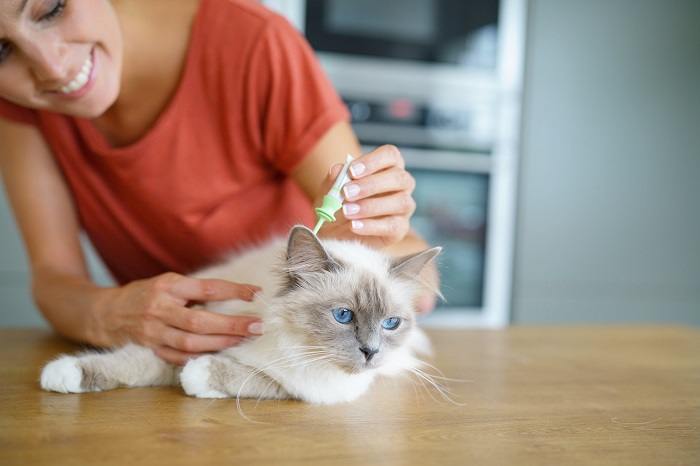
Revolution products are typically applied for monthly dosing every 30 days for the best protection.
Always follow all instructions on the packaging for any topical product you use for your kitty. Revolution vials have a cap that first needs to be pushed down into the vial to puncture it. The cap can then be removed, and the entire contents of the vial applied by parting the fur and applying to the skin along the back of the neck in front of the shoulders where a kitty cannot reach to lick it off of himself.
While Revolution products are considered to be waterproof within 2 hours of application, the manufacturer still recommends waiting 24 hours to bathe your kitty after application. Bathing shortly before application may also reduce its effectiveness.
If for some reason you are unsure if the product was administered correctly or whether all of it was applied, it is usually safest to not apply an additional dose.
If you have any questions about application or safety for Revolution products or any topical product, make sure to get in touch with your veterinarian.
Conclusion

Revolution has been used for cats for many years and is generally a safe and effective product when used properly. Because it is a heartworm preventative, it is important to remember that both Revolution products require a prescription.
Drug Dosing Disclaimer: We are only able to provide doses for medications that are FDA approved for use in cats and only as the label guidelines dictate. For medications that are used off-label we can only provide guidelines and safety information for use. Safe and appropriate dosing for off-label medications can only be determined by a primary care veterinarian.
We encourage you to work with your veterinarian to determine if a particular medication is appropriate for your cat. Changing or adjusting a dose for your cat on your own without consulting with a veterinarian can carry risk. We do not encourage use of medications prescribed for human use in pets without first consulting with a primary care veterinarian.
